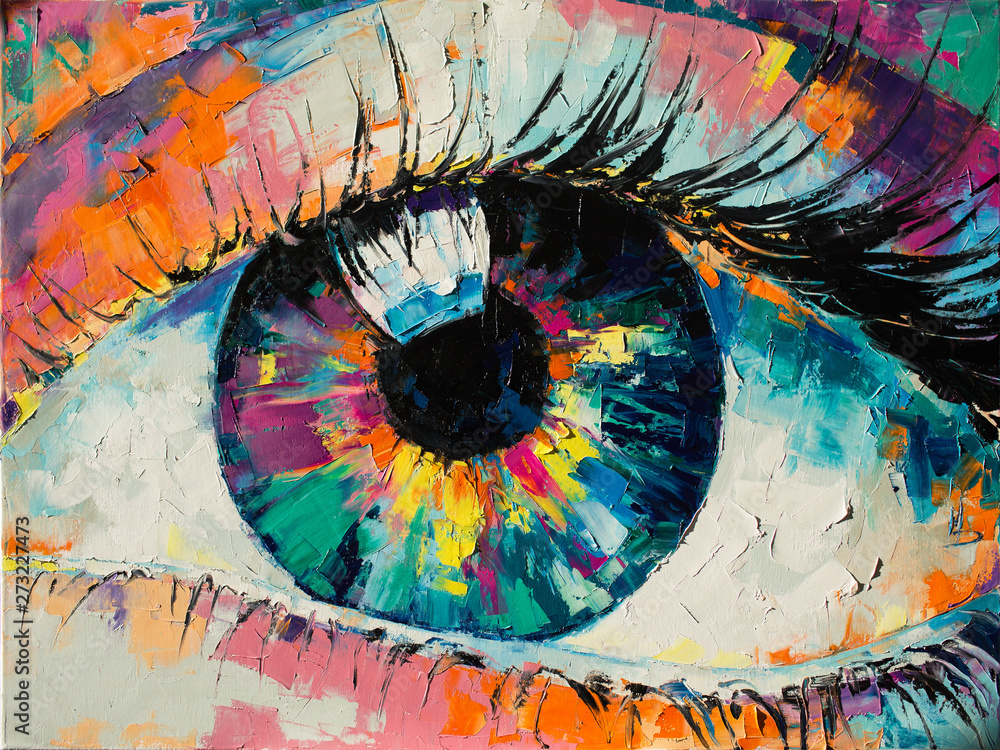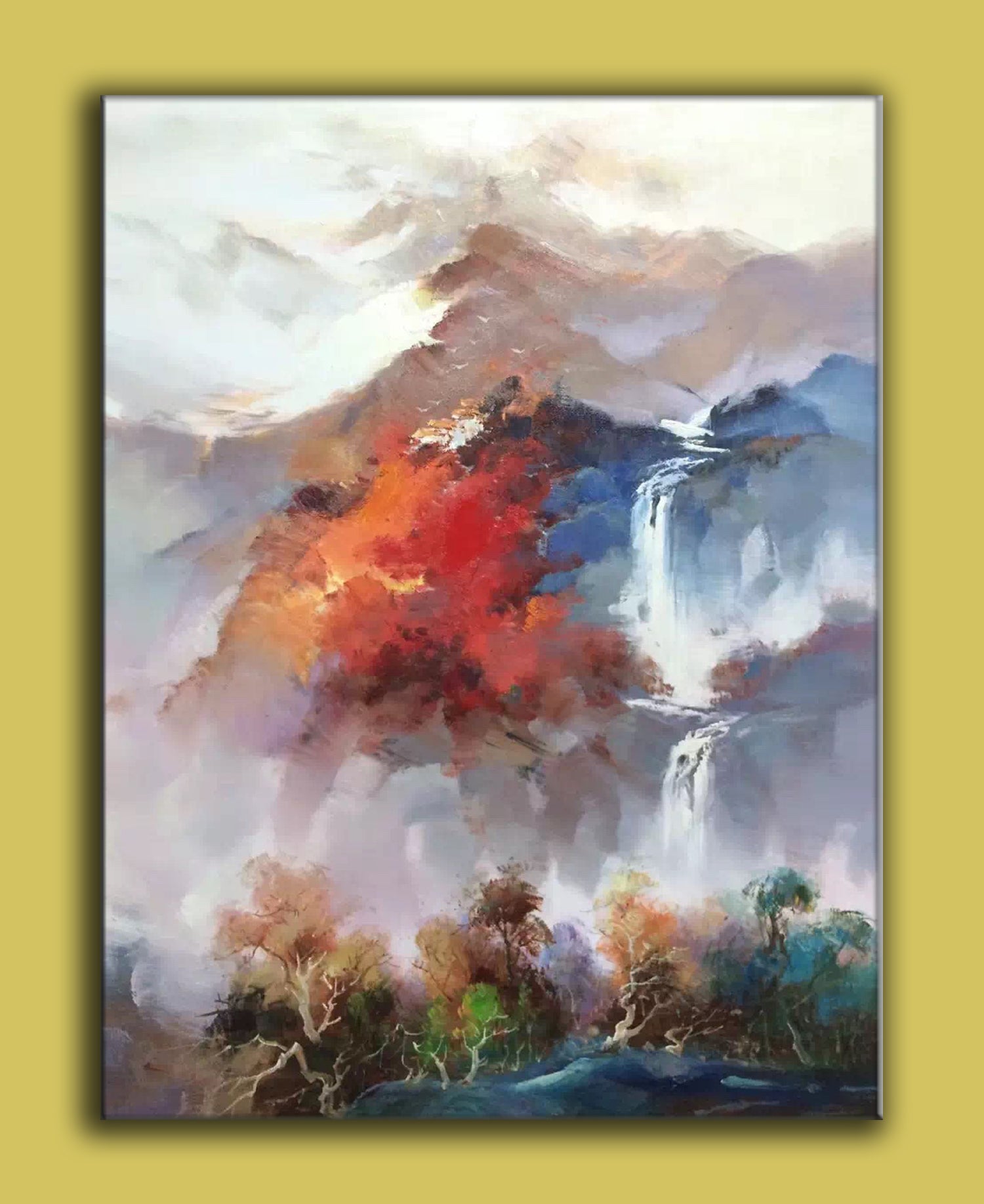Exhibit-Worthy Wall Art: Oil Paintings for Sale
Exhibit-Worthy Wall Art: Oil Paintings for Sale
Blog Article
Discovering All Concerning Oil Paints: An Overview to Comprehending Their Elegance and Worth
Oil paints have actually mesmerized audiences for centuries, using a glimpse right into the imaginative mastery of different eras. Their abundant background is intertwined with innovative techniques and extensive emotional expression. Comprehending the materials and methods behind these artworks can improve gratitude. In addition, the marketplace for oil paintings presents opportunities for enthusiasts and capitalists alike. As one discovers this fascinating globe, the concern occurs: what makes an oil painting genuinely important?
The History of Oil Paint: A Journey Via Time
Oil paint has roots that date back to old times, it truly prospered during the Renaissance, when musicians discovered its convenience and rich shade capacity. Early instances can be traced to the 7th century, with strategies progressing notably across societies. The medium became noticeable in Northern Europe in the 15th century, particularly via the works of musicians like Jan van Eyck, that pioneered its usage for detailed realistic look and vivid shades. This duration noted a departure from tempera paints, permitting greater depth and structure. As oil painting spread, it influenced numerous musicians, leading to work of arts by prominent numbers such as Leonardo da Vinci and Rembrandt. The medium's tradition proceeds, forming the art globe well right into modern times.
Comprehending Oil Repaints: Products and Techniques
As artists check out the globe of oil paints, they run into a diverse variety of products and techniques that define this tool. The key parts of oil paint consist of pigments, which offer color, and drying out oils, such as linseed, that bind the pigments and facilitate application. Different ingredients can change the paint's appearance and drying time, improving convenience. Methods like glazing, where transparent layers are built up, and impasto, which entails applying thick paint, allow for various visual results. Additionally, the use of brushes, combination knives, and even fingers can produce distinct appearances and coatings. Comprehending these products and methods allows artists to fully express their creativity and achieve the wanted effect in their artwork.
The Function of Color in Oil Paintings
Shade plays a pivotal duty in oil paints, influencing both visual allure and emotional resonance. Recognizing shade theory essentials, including the relationships in between colors, can enhance a musician's capability to convey state of mind and atmosphere. In addition, understanding color blending methods enables better depth and splendor in a painting's combination.

Color Theory Basics
Recognizing shade concept is necessary for artists collaborating with oil paints, as it creates the foundation for creating unified and aesthetically engaging make-ups. Shade concept encompasses the research of exactly how colors connect, the shade wheel, and the relationships in between main, secondary, and tertiary shades. Musicians use complementary shades to enhance contrasts and develop centerpieces, while similar colors advertise unity and cohesiveness within a piece. In addition, the ideas of great and warm shades influence the assumption of depth and room in a painting. Realizing these principles permits musicians to adjust color efficiently, leading the customer's eye and communicating their desired message. Mastery of shade theory ultimately enhances an artist's ability to share feelings and ideas via their work.
Psychological Effect of Color
The emotional influence of shade in oil paintings plays an essential duty in exactly how audiences regard and link with art work. Colors evoke details sensations and state of minds, affecting the audience's emotion. Warm colors like oranges and reds can develop a feeling of heat and power, while cool tones such as blues and environment-friendlies typically stimulate peace or introspection. Artists tactically pick shade palettes to enhance narrative components, guiding the target market's emotional journey. The saturation and contrast of shades additionally magnify these effects, drawing focus and creating emphasis. Eventually, the interaction of shades in oil paints not just boosts their visual allure yet additionally functions as an effective tool for emotional expression, enriching the viewer's experience and analysis.
Shade Mixing Techniques
While numerous aspects of oil painting add to the total structure, mastering shade mixing techniques is necessary for achieving desired effects and deepness. Shade mixing can be come close to via different techniques, including the additive and subtractive procedures. Additive blending entails incorporating shades of light, while subtractive mixing relies on pigments, where colors blend to create new tones. Musicians often utilize a limited scheme to produce harmonious jobs, comprehending the relationships in between main, secondary, and tertiary shades. Techniques such as glazing and scumbling further boost deepness and luminance. By skillfully mixing shades, an artist can evoke feelings, develop focal points, and accomplish a sense of realistic look, eventually elevating the paint's aesthetic and psychological influence.
Famous Oil Painters and Their Iconic Works

Well known for their mastery of shade and strategy, oil painters have produced a few of the most popular artworks in history. Prominent artists like Vincent van Gogh mesmerized target markets with his emotive brushwork in "Starry Night," while Claude Monet's "Perception, Sunrise" prepared for Impressionism. Leonardo da Vinci's "Mona Lisa" continues to be an enduring sign of imaginative brilliant, showcasing his skill in recording human expression. Rembrandt's "The Evening Watch" highlights his cutting-edge usage of light and darkness. Various other remarkable numbers consist of Pablo Picasso, who reinvented contemporary art with his strong testing in works like "Les Demoiselles d'Avignon," and Georgia O'Keeffe, whose dynamic depictions of landscapes and flowers helped define American innovation. Each musician's one-of-a-kind design contributed considerably to the oil paint landscape.
Exactly how to Assess the Quality of an Oil Painting
Evaluating the quality of an oil painting entails a cautious evaluation of craftsmanship strategies, along with an analysis of color and structure. Observing brushwork, layering, and the application of paint can expose the musician's ability degree. In addition, the interaction of shades and the total setup of aspects contribute substantially to the paint's aesthetic value.
Analyzing Workmanship Methods
A careful evaluation of workmanship methods is crucial for figuring out the quality of an oil paint. Evaluators need to first take a look at the application of paint; thick, textured brushstrokes might suggest a skilled hand, while extremely uniform applications might indicate a lack of deepness. oil paintings for sale. The layering method is additionally crucial; the presence of glazes and differed thickness can improve luminosity and intricacy. Furthermore, the quality of the materials made use of, such as the canvas and pigments, plays a considerable role in resilience and total visual. Attention to information in elements like sides and shifts between colors reflects the artist's commitment to their craft. Inevitably, these techniques add to the painting's psychological impact and market price, functioning as indicators of the musician's skill and intent
Assessing Color and Structure
While examining the quality of an oil painting, one need to concentrate on the interplay of color and structure, as these components are basic to the artwork's overall effect. Shade selections can evoke emotions and establish mood; consequently, the musician's palette ought to be checked out for consistency and contrast. A well-balanced make-up routes the audience's eye and develops a feeling of unity. Artists frequently use strategies like the regulation of thirds or leading lines to enhance aesthetic interest. In addition, making use of light and darkness can include deepness, enhancing the three-dimensionality of the painting. Ultimately, an effective oil paint marries color and composition, involving the audience and inviting a deeper gratitude of the artist's vision and technique.
Caring for and Preserving Oil Paintings
Correct treatment and conservation of oil paints is essential for maintaining their stability and long life. To shield these art work, it is read more crucial to show them away from straight sunshine, which can trigger fading and discoloration. Maintaining a secure setting with controlled temperature and humidity additional help in protecting against damage. Cleaning ought to be done gently using a soft, dry cloth, preventing any type of severe chemicals that could harm the paint or varnish. Normal assessments for indications of deterioration, such as flaking or cracking, are suggested. When moving or keeping oil paintings, proper cushioning and framing are essential to prevent physical injury. Ultimately, attentive treatment adds to the visual allure and value of oil paints over time.
The Marketplace for Oil Paintings: Gathering and Investing
Comprehending the market characteristics for oil paintings is important for enthusiasts and capitalists alike. The worth of these art work is influenced by numerous variables, consisting of the artist's credibility, historical importance, and present fads. Collection agencies frequently look for items that reverberate personally while thinking about possible appreciation in value. Galleries and public auctions work as key venues for trading, with rates fluctuating based on demand and rarity. Investing in oil paints calls for study right into the market, as well as an understanding of authenticity and provenance. Furthermore, arising musicians might supply opportunities for significant returns, while established names can command high rates. In general, a strategic technique to accumulating can generate both visual satisfaction and economic incentives.

Often Asked Inquiries
What Are the Ecological Impacts of Oil Painting Products?
The ecological influences of oil paint materials include the launch of unpredictable organic substances (VOCs), damaging waste generation, and source extraction for pigments. These variables add to contamination and eco-friendly deterioration, increasing concerns amongst environmentally mindful artists and customers.
How Do Different Canvases Influence Oil Painting Outcomes?
Different canvases affect oil paint results significantly. Surface, absorbency, and structure high quality can change paint application, drying times, and color vibrancy. Artists frequently choose specific canvases to achieve desired impacts and boost their artistic expression.
Can Oil Paintings Be Brought Back if Harmed?
Oil paintings can undoubtedly be recovered if damaged. Professional conservators utilize various strategies to repair splits, clean surface areas, and address staining, making sure that the artwork keeps its initial appeal and value for future generations.
What Are the Signs of an Initial Oil Painting?
The signs of an initial oil painting consist of visible brush strokes, appearance variations, and an uneven canvas weave (oil paintings for sale). Furthermore, authenticity might be validated with provenance, signatures, and the visibility of a varnish layer one-of-a-kind to oil mediums
How Has Modern Technology Influenced Modern Oil Painting Techniques?
Technology has actually significantly influenced contemporary oil painting strategies by introducing electronic tools for planning, boosted products for texture and long life, and on the internet systems for selling and sharing art, consequently expanding musicians' creative possibilities and target market reach. Oil paint has roots that date back to ancient times, it really prospered during the Renaissance, when musicians discovered its adaptability and abundant color possibility. The emotional effect of shade in oil paintings plays an essential function in how audiences link and regard with artwork. While lots of facets of oil painting contribute to the general composition, mastering shade blending techniques is vital for accomplishing desired results and deepness. Evaluating the top quality of an oil painting entails a mindful assessment of workmanship techniques, as well as an analysis of shade and composition. While reviewing the quality of an oil painting, one must concentrate on the interplay of color and composition, as these components are fundamental to the art work's general influence.
Report this page